The rise of strong euroskeptic parties in Italy in recent years had raised serious concerns about whether the country will permanently remain in the euro area. Although anti-euro rhetoric is now more muted, the fear of an “Italexit” still lingers in the economy. Italy’s notoriously high public debt is generally considered sustainable and not at risk of defaulting; however, investors see political unknowns still weighing on the financial stability of the country. Mirroring uncertainty, the Italian long-term government bonds carry interest rates that, though historically low, are four times higher than their Spanish or Portuguese equivalent.
Currently, euroskeptic parties are clearly leading Italy’s polls. There is little doubt that in the event of snap elections, League leader Matteo Salvini would be tasked to form a new government. Salvini has recently called the euro “irreversible” (though later backtracked). However, some of his advisers still publicly muse over the exit option, and his likeliest coalition partner — the Fratelli d’Italia party — is maybe even more anti-European than the League. Would the League and Fratelli d’Italia then be able to lead Italy out of the euro?
A hitherto unknown document prepared by the Italian authorities in 2012, at the most dramatic juncture of the euro crisis, reveals how economic consequences and legal controversies would make Italexit practically impossible. (The document was disclosed in a November book published by LUISS University Press: “Viaggio al termine dell’Occidente.”) The document should discourage, once and for all, Salvini’s openly anti-euro advisors from implementing their reckless Italexit plan.
At the end of 2011, a working group comprised of high-level representatives of the Italian government and central bank was asked to study the consequences of an involuntary Italian exit from the euro. They were concerned that the Greek crisis could cause a larger disruption and make investors run away from the euro area peripheral economies. At the beginning of November 2011, Italy was itself close to being cut off from market financing. That dramatic experience, which culminated in the abrupt resignation of then-Prime Minister Silvio Berlusconi, motivated the initiative.
Some months later, the group produced an 11-page document that was called “Plan Z” (a similar Greek document prepared in Brussels carried the same name) in order to spell out the implications of Italy’s extreme option. The study considered the eventuality of a crisis of confidence in the euro area that would move depositors to withdraw their funds from Italian banks. Italian authorities would then be forced to introduce administrative controls limiting cash withdrawals, as well as close cross-border money transfers. Those measures, though inevitable, would have aggravated the panic among the public.
The consequence would have been Italy’s default on its public debt. At first, this would have taken the form of an extension of the sovereign bonds’ maturity. Secondly, a reduction in the nominal value of the bonds would have occurred. The document refers to a target reduction of the debt-to-GDP level of 80% (120% at the time), although different options are considered.
At that point, Italy would have exited the euro. This would have occurred without a pre-determined juridical framework, since the EU Treaty does not contemplate the option of abandoning the monetary union. Technically, a new currency named the Eurolira would have been introduced. Since there would be no time to print new banknotes, the old ones would have to be marked by banks. Banking deposits would be converted in real time to Eurolira.
The “Plan Z” document mentions a severe recessionary impact on the economy, although one that would have been hard to estimate up front. Initially, the exchange rate would be fixed at one Eurolira for one euro. Later, the market would have forced the Eurolira to devaluate in an unpredictable measure.
The drop in the value of the new currency would have depended on what mechanism was chosen for restructuring the public debt. A debt-to-GDP level of 80% was considered consistent with the refinancing of public borrowing requirements through domestic investors only. It was considered essential that Italy avoid resorting to foreign investors in order to prevent an even more dramatic devaluation. With Italy’s primary budget surplus being positive, it would have been possible to service the public debt, had it been reduced to 80% of Italy’s GDP.
One option was not to change the nominal value of bonds, but to announce a major sale of publicly-held goods and firms, coupled with a consistent wealth tax on financial assets held in bank accounts. A second option would have implied a 10-20% reduction in the government bonds’ nominal value, coupled with a maturity extension, trying carefully to avoid a real “default.” The latter, a legally defined category, would have caused enormous legal controversies and huge costs for refunding investors. However, avoiding a declaration of default would have almost been impossible.
In fact, the most dramatic consequence of Italexit would have been the constant litigation over every single measure undertaken by the government. A long technical annex to the document describes a daunting scenario of legal controversies, lasting years, that would have made the whole operation completely unrealistic and doomed to catastrophic consequences that would have reverberated even beyond the euro area.
Finally, there are two versions of the document: a preparatory one started in 2011, and the final one dated July 27, 2012. That latter date is significant, because it is one day after Mario Draghi’s famous “whatever it takes” statement that saved the euro. The existence of Italy’s “Plan Z” sheds more vivid light on Europe’s existential challenge, which Draghi was able to stave off.
Uncertainty about Italy’s determination to stay in the euro has been deterring investments and seriously harming economic growth. Anti-European rhetoric among Italian leaders is also a political diversion away from taking stock of the reforms that the country needs. Admitting — unambiguously — that exiting the euro would be disastrous should be the first and most crucial step for whoever aims to lead Italy.

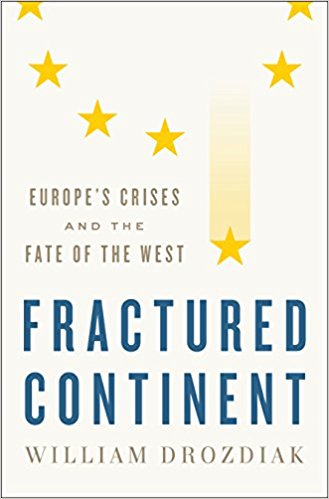
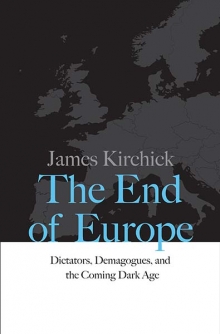
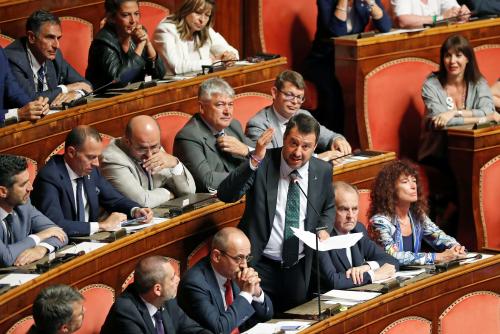
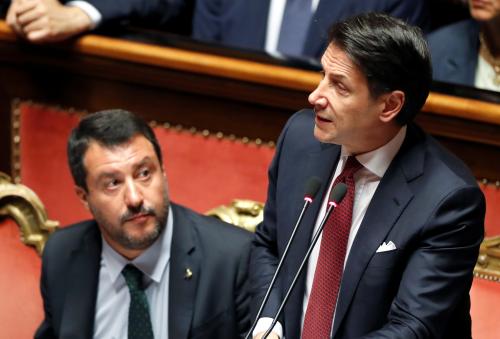



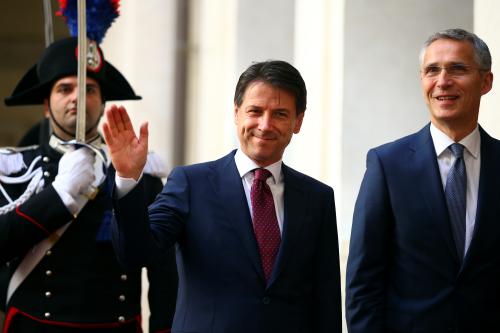

Commentary
Why Italy cannot exit the euro
December 17, 2019